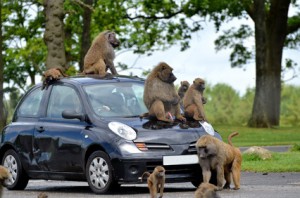In Texas, where deer and rodents regularly cross the highway without warning, avoiding a wildlife-vehicle collision (WVC) can be a challenge.
Driving can put your vehicle in the path of a wild animal, which can cause significant vehicle damage, injury, or in rare cases, a human fatality.
In the U.S., 725,000 to 1.5 million WVCs occur each year. It is unrealistic to prevent a wild animal from crossing your vehicle's path while driving. However, you can reduce the risk for vehicle damage or injury by learning about how to handle your vehicle if an impending collision should occur.
Defensive driving in Texas is as necessary as State pride. If a deer or rodent enters the path of a vehicle traveling at a high speed, it is nearly impossible to avoid a collision.
Make a decision that results in the least amount of damage, which is the best option.
According to Texas Department of Public Safety Sergeant Stephen Bynum in Lampasas, as unusual as it may sound, when an animal enters your vehicle's path and you have no time to react, holding onto a steering wheel tightly, depressing the brake pedal in a controlled motion, and driving directly into the animal is the safest strategy. If you were to swerve to avoid it, your vehicle could rollover or hit oncoming traffic.
Additional steps to follow after experiencing a WVC:
- Turn on emergency flashers, and drive a car that has collided with an animal to the shoulder if possible. If the car will not start, remain seat belted in the vehicle or exit away from traffic and wait for help to arrive in a safe area.
- Call 911 to report the incident and contact your insurance company to report the claim.
 Live Chat
Live Chat




